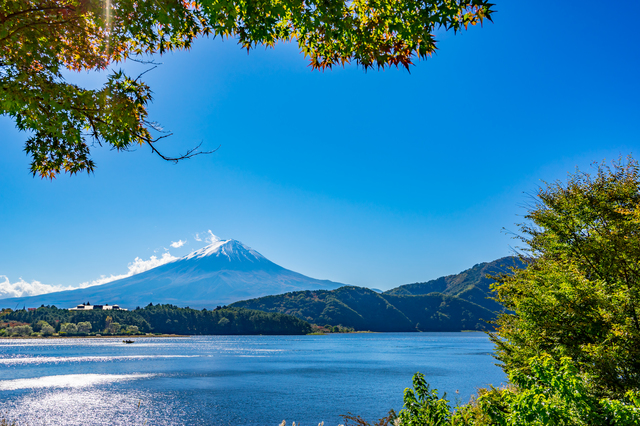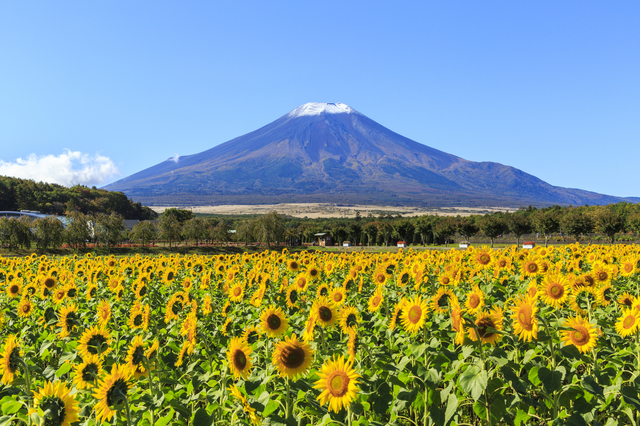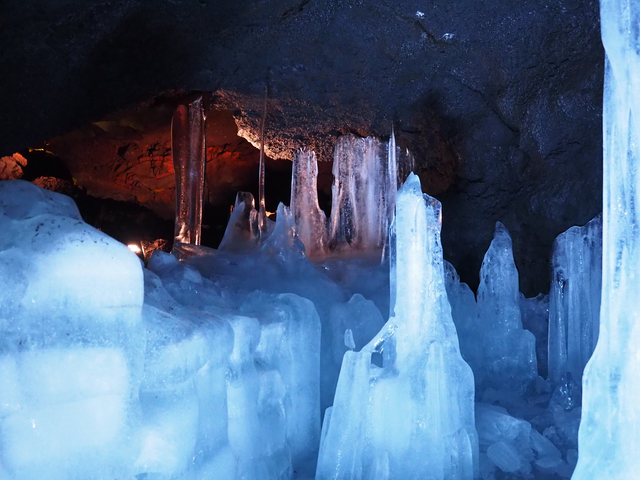
From Standards to Well-kept Secrets! Five Recommended Nature Spots in Yamanashi
Yamanashi is the home to Mt. Fuji, the sacred mountain that represents Japan, and has many natural spots created by Mt. Fuji. Here are five recommended destinations in Yamanashi.
This post may contain affiliate links. If you buy through them, we may earn a commission at no additional cost to you.
1. Mt. Fuji
Mt. Fuji is a sacred mountain that was designated a World Heritage Site in 2013. It has been adored over the years as a mountain that symbolizes Japan, as represented in the ukiyo-e paintings by Katsushika Hokusai. It is 3,776m high. It is the highest mountain in Japan and can been seen from across the prefecture, but if you wish to visit it, you can take a bus or drive up to the parking lot at the Fifth Station. The Fifth Station has restaurants and a shrine and depending on the weather, you can see a sea of clouds from it, so many people go there and choose not to hike. Hiking is limited to four routes from the Fifth Station (each with a different starting point), but are all closed during the winter. The mountain is only open during the summer, so if you wish to hike, be sure to make advance preparations.

2. Lake Kawaguchi
This is a lake that is registered as a component part of Mt. Fuji World Heritage Site. It is known to have the largest shoreline among the Fuji Five Lakes and has many spots with fabulous views of Mt. Fuji. In particular, Ubuyagasaki on the eastern shore is a famous spot for the "upside-down Fuji" reflection of Mt. Fuji on the lake and attracts many photographers. In addition to the views, there is much to do on Lake Kawaguchi, such as canoeing and ferry boat rides. It was the first of the Fuji Five Lakes to become a tourist destination, so there are numerous restaurants and souvenir shops in the area. There are also many museums, such as Kawaguchiko Music Forest Museum, so stop by if you are an art lover.

3. Oshino Hakkai
Oshino Hakkai are eight ponds that were created by ground water from Mt. Fuji that welled up. The water created from snow melt that has been filtered over a period of about 20 years is beautifully transparent, and is designated as one of 100 most beautiful waters in Japan. Each of the ponds have a different atmosphere and characteristics such as Wakuike, which is surrounded by souvenir shops; Kagamiike, where you can see Mt. Fuji reflected upside down if the conditions are right; and Shobuike, with flora such as Japanese iris and Iris pseudacorus. As the ponds are a part of an area for pilgrimage to Mt. Fuji, each one has a shrine to the eight great dragon kings of Buddhism so you can pay your respects when visiting the ponds.

4. Yamanakako Hana no Miyako Kouen
This is a park that spreads out on the shore of Lake Yamanaka where you can enjoy seasonal flowers with Mt. Fuji as the backdrop all year round. In the free flower field and farm area, you can see seasonal flowers that cover a vast area of 300,000 square meters. In particular, the sight of Mt. Fuji beyond the approximately 220,000 sunflowers that bloom in the summer is spectacular. At the Seiryu-no-Sato and Seiryu-no-Sato Floral Dome Furara, which require admission fees, you can enjoy a variety of different flora as well as fun facilities for families such as a lava tree mold cave observation zone and water playground.

5. Fugaku Wind Cave/Narusawa Hyoketsu Ice Cave
There are many caves and wind holes that were created by lava around Mt. Fuji. These two that are located near the entrance of Aokigahara Jukai "sea of trees" forest are popular as the most representative of them. Both have average temperatures of 3℃ so you can enjoy exploring in a cool environment even during the summer. Fugaku Wind Cave is an 8.7m-high cave that goes on for 201m and is made of basaltic, which absorbs sound. Experience the slightly strange feeling of being in a place where sound does not reverberate. On the other hand, the Narusawa Hyoketsu Ice Cave is a pit type cave that is 153m long. The "ice" that is in its name are ice pillars created by water droplets that have seeped out from the ceiling and can be seen year round. Depending on the year, you may see huge ice pillars that are as large as 50cm in diameter and 3m high.

Please use this information to plan a visit to nature rich destinations in Yamanashi, which is easily accessible from Tokyo.
The information in this article is accurate at the time of publication.




